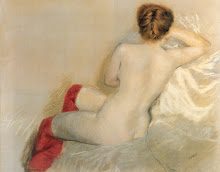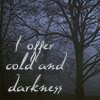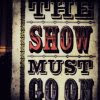One of his most striking perp-walk shots was of Norma Parker, a pretty young woman who in 1936 held up a number of restaurants on lower Broadway using a cap pistol, for which The Daily Mirror nicknamed her the Broadway Gun Girl.
By the end of the war, Weegee was in fact “Weegee the Famous.” Short and pug-ugly, with a boxy Speed Graphic camera always in hand and a cigar permanently in his teeth, he was recognized throughout the city and, increasingly, the country.
His book inspired “The Naked City,” a film in which Weegee makes a fleeting, Hitchcock-like appearance. That prompted a move to Hollywood, where Weegee hobnobbed with stars and got tiny acting parts in a few more films. But he never really fit into what he called “the Land of the Zombies” and moved back to Manhattan in 1951.His crime photography days were over. Until his death in 1968 he experimented with film and trick photography and toured the United States and Europe, giving lectures and enjoying his fame. In his travels he met Peter Sellers on the “Dr. Strangelove” movie set; an excerpt from an audiotaped conversation is on YouTube.
In 1968 the theater and film director Syeus Mottel, who was experimenting with still photography, was walking in Washington Square Park with a girlfriend. “I see Weegee sitting on a bench looking very forlorn, with an old camera, really a piece of junk, hanging from his neck,” Mr. Mottel recently recalled. “When I asked if he had any advice for a young photographer, he said, ‘Yeah, sharp elbows.’ ” While the young woman charmed Weegee, Mr. Mottel took photographs. When it came time for dinner, Weegee suggested Bernstein-on-Essex, a kosher Chinese restaurant.
In 1957, suffering from diabetes, Weegee took a small apartment at 451 West 47th Street in Hell’s Kitchen, a town house owned by his friend Wilma Wilcox, an amateur photographer. When he died he left the place crowded with equipment “and stacks and stacks of thousands of photos and negatives strewn about,” Mr. George said. “His philosophy of archiving was to keep everything in a barrel, so if anyone wanted anything, they’d come over and fish.” Much of that material came in the early 1990s to the International Center of Photography, which has mounted several exhibitions.“Along with everything else there was a cardboard box labeled ‘Weegee,’ ” Mr. George said. “It was opened several months after it arrived. Weegee was really in there.” It was his cremated remains. “Apparently some staffers got the heebie-jeebies from having the ashes around,” he said, “so I.C.P. arranged to have them dispersed at sea.”
I need to alert my friend in Hubcap City and my ex-boss Lisa (both Weegee fans) that there is a good article about Weegee in the New York Times today. Of course, being Weegee fans, you two probably already know everything in it. My favorite part is the passing mention of "Norma Parker, the Broadway Gun Girl," who robbed restaurants with a cap pistol. I ought to look up more information about her, or better yet, someone else should do it while I lie down.
Another portrait, this one of Arthur Fellig, the crime photographer of the streets of New York City, was taken under a bare bulb in Fellig’s seedy hotel room. Bill didn’t know it at the time, nor perhaps did Fellig but Fellig was dying of a brain tumor.
Earlier in his career Fellig slept in his clothes, a police radio
nearby. When he heard a radio call about a crime serious enough for his attention, he raced to the scene, often beating the cops. His seeming uncanny ability to pop up out
of nowhere earned him the nick- name of Ouija. Fellig couldn’t spell, but liked it enough that he changed his name to Weegee the Famous, even stamping it on the back of his
prints. Weegee’s room was filled with stuff of all kinds.
There was no place to sit other than on Weegee’s single bed, so Bill stood. The room was packed with prints and photographic paraphernalia. Weegee was in and out of consciousness as Bill attempted to interview him.
Then, during one of Weegee’s more lucid moments, (which looks more than slightly deranged,) Bill caught him on camera under the glaring light of the single bare bulb above the bed. The look in Weegee’s eye says it all.
Of that moment, Bill says, “Weegee was obviously tiring so I left him, a sad sick old man, alone with his life’s work. I knew I would never see him, or his like, again.”
Where was "Fellig’s seedy hotel room?"
Wilma's beautiful brownstone, neither seedy nor a hotel, at 451 West 47th St.
Subscribe to:
Post Comments (Atom)




No comments:
Post a Comment